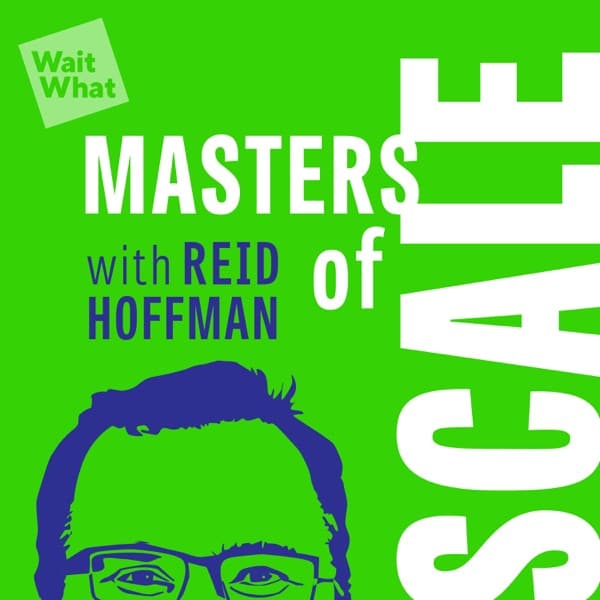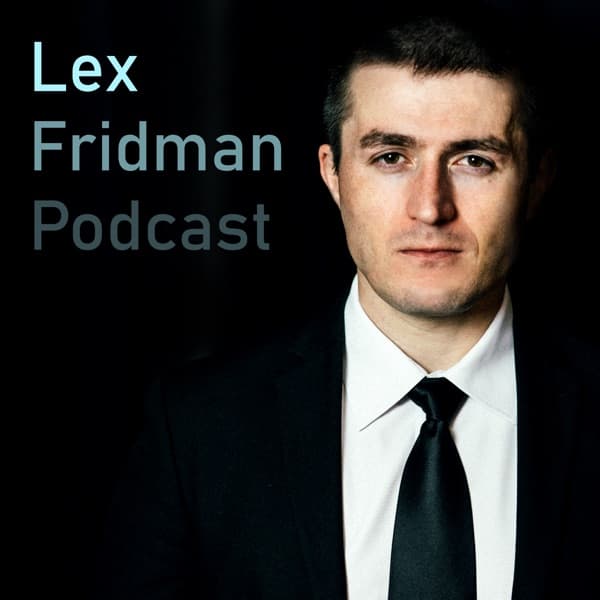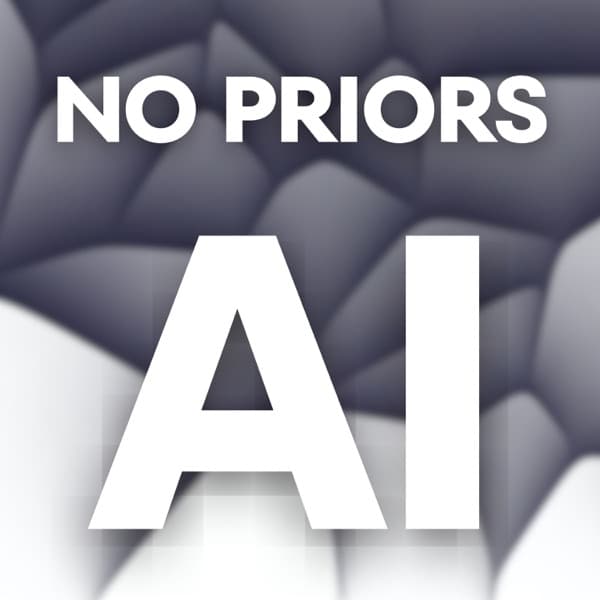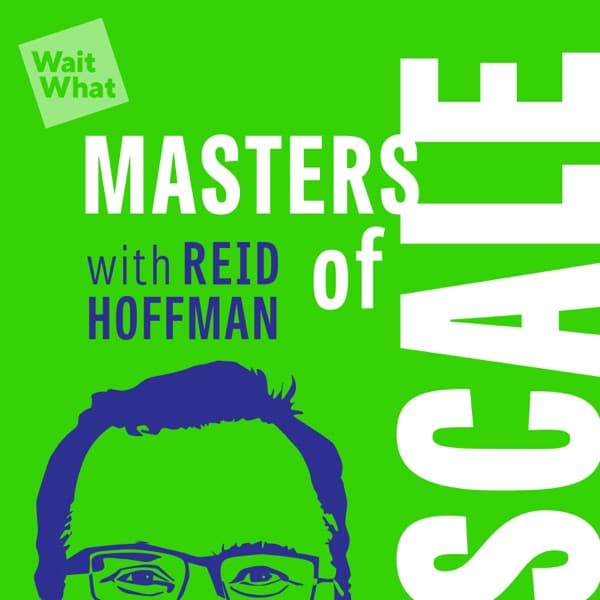a16z: The discussion focuses on the transformative potential of AI in financial services, emphasizing the importance of addressing pain points and leveraging AI for complex tasks.
TechCrunch: The podcast discusses recent developments in AI, fintech, and defense sectors, highlighting legal battles, funding rounds, and strategic shifts.
The Twenty Minute VC (20VC): Venture Capital | Startup Funding | The Pitch: Solly Solomu, founder of Ladbible, shares his journey from a small startup to a global digital media company, emphasizing the importance of profitability, adaptability, and cultural fit in business growth.
TechCrunch Startup News: Softer expands its no-code app builder to support multiple databases, enhancing flexibility for small businesses.
TechCrunch Startup News: SpotDraft is leveraging AI to streamline legal contract management, experiencing significant growth and investment.
a16z - Reasoning Models Are Remaking Professional Services
The conversation highlights the journey of building an AI company focused on financial services, starting from the realization that many smart individuals were engaged in tedious tasks. The speaker identified a significant opportunity to apply AI to alleviate these pain points. The discussion covers the concept of scaling laws in AI, which suggest that as more data and compute are added, models improve. The speaker believes that AI will continue to advance, particularly in complex task execution, which is crucial for financial services.
The speaker also discusses the development of AI tools like "deep research" and the importance of private data in enhancing AI's effectiveness in financial services. They emphasize the need for AI to handle complex, multi-step tasks and the integration of private data to provide differentiated results. The conversation touches on the future of AI in finance, predicting significant changes in market dynamics and the potential for AI to uncover inefficiencies and fraud. The speaker envisions AI transforming the capital markets by providing tools that can process vast amounts of data efficiently, ultimately leading to more informed investment decisions.
Key Points:
- AI can alleviate tedious tasks in financial services, improving efficiency and job satisfaction.
- Scaling laws in AI suggest continuous improvement with more data and compute, crucial for complex tasks.
- Private data integration is key for AI to provide differentiated and accurate results in finance.
- AI tools like "deep research" enhance the ability to conduct in-depth analysis and strategic planning.
- The future of AI in finance includes uncovering market inefficiencies and transforming capital markets.
Details:
1. 🎓 Career Choices and Observations
1.1. Observations on Career Dissatisfaction
1.2. Strategic Decision to Leverage Technology
2. 🚀 Introduction and Lightning Round
- Scaling laws for training and inference are considered fundamental mathematical properties, not just experimental observations, indicating their robust nature in AI development.
- The improvement of models with increased data and compute is a consistent trend, suggesting that future models like GPT-5 will surpass current ones like GPT-4, showcasing the potential for continued advancements.
- Inference scaling, a technique pioneered by HEIA, demonstrates that utilizing more models and compute during inference enhances results for complex tasks, reinforcing the concept's validity.
- This approach has already extended AI capabilities and is predicted to remain a fundamental aspect of AI progression, emphasizing the importance of scaling in both training and inference.
3. 🔍 Scaling Laws and Deep Seek Insights
- China has demonstrated the ability to make technologies invented in the U.S. more efficient, but there are concerns about transparency and truthfulness in technology and science discussions.
- Deep Seek is considered an American technology, cheaper and initially developed in the U.S., with skepticism about China's ability to compete in advancing AI frontiers.
- There is a push for open-source development in the U.S., which could impact regulatory considerations and reduce geopolitical advantages of closed-source nations.
- The U.S. is perceived to be far ahead in technology advancements, with exponential improvements each year and a significant head start due to superior scientists, researchers, and companies.
- American companies are likely to benefit from reducing costs of AI models, leveraging the country's technological lead and talent pool.
4. 🛠️ Favorite AI Tool: Deep Research
4.1. Introduction to Deep Research
4.2. Versatile Use Cases
4.3. Impactful Application Example
4.4. In-Depth Research Capabilities
4.5. Enhanced Information Retrieval
4.6. Strategic Business Applications
4.7. Performance and Organizational Fit
5. 🎓 Transition from Academia to Entrepreneurship
- The speaker was a PhD student studying Neuroscience, Engineering, and Applied Physics before deciding to build a company targeting Financial Services.
- A pivotal class at Stanford, CS 330, focused on meta learning and multitask learning, sparking the speaker's interest in AI technologies.
- The speaker was captivated by the potential of meta learning, which involves teaching machines how to learn, and considered it a groundbreaking technology.
- In June 2020, OpenAI's GPT-3 paper was released, highlighting large language models as multitask and meta learners, influencing the speaker's entrepreneurial direction.
- The speaker recognized the advanced capabilities of GPT-3, which was not yet known as ChatGPT, as superior to existing technologies at the time.
- Realizing the potential of using AI to build impactful products, the speaker decided to focus on applying AI to solve real-world problems.
- The speaker observed peers in Financial Services performing repetitive tasks, identifying a market need for AI solutions to alleviate these tasks.
- Drawing from the entrepreneurial culture at Stanford, the speaker was motivated to address the 'pain' experienced by knowledge workers through innovative AI solutions.
6. 💼 Building Heia for Financial Services
- Heia offers a tailored approach for financial services by incorporating offline and unstructured information crucial for knowledge work, unlike ChatGPT which relies heavily on public data.
- ChatGPT excels in creative and single-task scenarios but struggles with complex, multi-step processes required for financial services, highlighting the need for Heia's specialized capabilities.
- Heia's ability to utilize private data, such as proprietary investment memos, allows for differentiated and customized outputs, providing more strategic value than generic public data models.
- The tool's infinite context window enables users to compare new opportunities with historical data, enhancing investment decision-making processes.
- Heia addresses the transparency and accuracy demands of financial services, positioning itself as a transformative tool for investors, potentially accelerating market adoption.
7. 🔧 Heia's Interface and Capabilities
7.1. Heia's Design Philosophy
7.2. Task Optimization and Efficiency
8. 📈 Use Cases and Value Proposition
- The main challenge is not the technology itself but understanding what tasks AI should perform, indicating a need for change management and sociology insights.
- AI can potentially perform any task that a junior analyst can, often outperforming them, highlighting the need for strategic task identification.
- The transition to an AI-centric workforce is underway, with new analysts being 'AI native,' integrating AI into their workflows for increased efficiency.
- AI applications provide value by significantly reducing task time from hours to minutes and achieving new results that were previously unattainable with human effort alone.
- For example, in financial services, AI algorithms can analyze data sets 90% faster than human analysts, improving both speed and accuracy.
- The evolution of the workforce involves not just using AI as a tool, but fundamentally changing roles to embrace AI capabilities.
9. 🔍 Real-Life Applications in Finance
9.1. Time Savings through Automation
9.2. Enhanced Discovery and Analysis
9.3. Efficient Screening and Decision Making
9.4. Accelerated Diligence Process
9.5. Customizable AI Templates for Finance
10. 💼 Advisors and Legal Use Cases
10.1. Advisors' Use of Technology
10.2. Legal Professionals' Use of Technology
11. 📊 AI's Impact on Business ROI
- By 2025, AI integration in companies is assumed, with focus shifting to the ROI from AI investments.
- Boards are demanding measurable P&L impacts from AI, with investments sometimes reaching hundreds of millions.
- AI-driven efficiencies allow firms to save significantly on legal reviews, reducing costs from $2,000 per hour for lawyers to tens or hundreds of thousands per deal.
- AmLaw 50 clients have reduced customer onboarding time from 5-8 hours to instantaneous data comprehension.
- Private equity associates save 4-8 hours weekly by automating portfolio company reports, improving accuracy and efficiency.
12. 🤝 Human-Software Interaction
- The trend in AI and software development is often aimed at replacing humans, but there's a shift toward designing interfaces that empower and enhance human capabilities.
- Steve Jobs' metaphor of computers as 'bicycles for the mind' illustrates the potential of technology to extend human abilities and encourage exploration.
- The goal is to move beyond simple interfaces like chatbots to more sophisticated systems that truly serve human needs and enhance user empowerment.
13. 👩💻 Building for the Next Generation
- Early career professionals, described as AI literate, are the primary users of the product, indicating a focus on building tools for the next generation of workers.
- These users are AI native, meaning they are the first analysts to integrate AI into their roles to handle mundane tasks, improving efficiency.
- Even senior professionals, like some Managing Directors (MDs), are beginning to use AI to verify analysts' work, highlighting cross-generational adoption of AI tools.
- Capturing early career professionals is crucial as they are likely to advance to more senior roles, leading to broader organizational change as they adopt AI tools.
- Support from senior executives, such as CIOs and MDs, is essential for organizational change management and AI adoption, as these leaders use and endorse these technologies.
14. 📉 Future of Finance with AI
- A significant correction in financial markets is anticipated with the advent of AGI, which will outperform human investors by identifying fraud and market inefficiencies.
- AI will transform private company data into a structured format similar to Bloomberg terminals, revolutionizing private investing more than public investing.
- AI will enable faster and more accurate valuation of private companies, affecting investment decisions and IPO readiness.
- Firms with extensive data history, like Mega funds, may initially have an advantage, but new market opportunities may not rely on historical data.
- The transition to AI-driven finance will require adapting to new deal structures, reducing reliance on past data models.
- AI's impact on public investing includes enhanced trading algorithms that improve transaction efficiency and accuracy, potentially reducing human error and increasing market liquidity.
15. 💲 Pricing Models and Market Strategy
15.1. Traditional vs. Emerging Pricing Models
15.2. Strategic Implications and Market Adoption
16. ⚙️ Balancing UI and Customer Needs
- When prioritizing features, view the software as a complete composition rather than merely adding features—this ensures cohesive design and usability.
- Avoid the 'Salesforce effect' of accumulating an overwhelming number of features that complicate the user interface.
- Adopt a strategy of continuous redesign to ensure that new features integrate seamlessly into the existing system.
- Consider long-term product vision and not just immediate customer requests to create solutions that meet future needs.
- Leverage user feedback and data analytics to prioritize features that enhance user experience without cluttering the UI.
- Conduct regular UI audits to identify and remove or simplify features that do not contribute to core functionality.
17. 📊 Success Metrics for AI
- Success in AI requires not only generating information but also the ability to filter 'signal from noise' effectively, thereby providing concise and actionable insights.
- AI is projected to contribute over 50% of the global GDP in the next decade, signifying significant new value creation alongside human labor, rather than its replacement.
- Effective AI implementation examples include a 45% increase in revenue through AI-driven customer segmentation and a reduction in product development cycles from 6 months to 8 weeks using new methodologies.
- Customer retention improved by 32% through personalized engagement strategies powered by AI, demonstrating tangible benefits of AI deployment.
18. 🌍 Vision for AI's Role in Society
- People are least satisfied in jobs with repetitive tasks; AI can replace these, allowing humans to focus on thinking, deciding, and creating.
- The goal is to shift human effort from mundane tasks to more subjective, creative, and decision-making roles.
- The aspiration is for AI to save at least 1% of the world's population 1% of their time, with potential for much greater impact.
TechCrunch - Elon Musk and Sam Altman are basically in a rap battle | Equity Podcast
The podcast covers several key topics, starting with a legal case where Thompson Reuters won an AI copyright lawsuit against a legal AI startup, marking a significant precedent in AI copyright issues. The discussion then shifts to fintech, focusing on Tabby, a buy now, pay later company in Saudi Arabia, which raised $16 million at a $3.3 billion valuation. This highlights the growing fintech opportunities in regions with low credit card penetration. The conversation also touches on Archer Aviation's $300 million raise to develop electric vertical takeoff and landing aircraft, emphasizing the trend of tech companies turning to defense contracts for revenue.
The podcast also delves into Elon Musk's offer to buy OpenAI's nonprofit governing entity for $100 billion, a move seen as a strategic attempt to disrupt OpenAI's for-profit conversion. This reflects Musk's ongoing legal and strategic maneuvers in the tech industry. Additionally, the AI Action Summit in Paris is discussed, noting a shift from focusing on AI safety to emphasizing AI opportunities, reflecting broader trends in AI development and regulation. The episode concludes with a discussion on the geopolitical implications of AI development, particularly in relation to China and the U.S.
Key Points:
- Thompson Reuters' AI copyright lawsuit win sets a precedent for future AI legal battles.
- Tabby's $16 million raise highlights fintech growth in regions with low credit card use.
- Archer Aviation's $300 million funding emphasizes tech companies' shift to defense contracts.
- Elon Musk's $100 billion offer for OpenAI aims to disrupt its for-profit conversion.
- AI Action Summit shifts focus from safety to opportunity, reflecting broader industry trends.
Details:
1. 🎧 Welcome and Sponsor Message
- The episode is sponsored by Invest Puerto Rico, promoting the island as a prime business destination.
- Invest Puerto Rico presents the island as an ideal location for businesses capable of operating globally.
- The sponsor emphasizes Puerto Rico's strategic value for companies seeking to expand their geographic footprint.
2. 📚 AI Copyright Lawsuit and Market Implications
2.1. AI Copyright Lawsuit Details
2.2. Market Implications of the AI Copyright Lawsuit
3. 💼 Business Highlights: Tabby and Archer Aviation
3.1. Tabby's Strategic Growth in the Middle East
3.2. Archer Aviation's Developments
4. 💳 Fintech Trends and Regional Insights
- The 'buy now, pay later' model is experiencing significant growth in regions such as South America, Africa, and the Middle East, where traditional banking infrastructure is underdeveloped. Companies are leveraging this model to reach underserved populations, offering new financial solutions that bypass traditional banking systems.
- In North America, particularly in the US, there is substantial investment in the 'buy now, pay later' market. However, companies face potential challenges, such as market saturation and regulatory hurdles, which can limit growth opportunities.
- The US market presents unique challenges due to its complex regulatory environment, making emerging markets potentially more attractive for fintech innovation. These regions offer a less saturated market with fewer regulatory barriers, allowing fintech companies to operate more seamlessly and capture market share more effectively.
- Emerging markets provide fertile ground for fintech innovations, with less competition and regulatory constraints compared to North America, offering companies a strategic advantage in expanding their services.
5. 🚀 Archer Aviation's Strategic Defense Ventures
- Archer Aviation successfully raised $300 million from investors like BlackRock and Wellington, emphasizing a strategic pivot towards dual-use technology.
- The eVTOL market is still in its nascent stages, with companies working towards FAA type one certification, highlighting the potential growth in this sector.
- Originally focused on air taxis, Archer is now broadening its scope to include defense applications, potentially diversifying revenue streams and supporting valuation growth.
- This strategic shift towards defense applications positions Archer to tap into potentially lucrative government contracts, presenting both opportunities and challenges in navigating regulatory and market dynamics.
6. 🛡️ Tech Giants and Defense Partnerships
- Companies like Anduril are utilizing Department of Defense (DoD) funding to scale production, such as at Archer's Georgia Factory, focusing on hybrid and all-electric vehicles for defense applications.
- Tech firms in future flight and autonomous vehicles are turning to defense for new revenue streams, driven by extended commercialization timelines in their industries.
- The Trump Administration's policies have accelerated the trend of tech companies exploring defense opportunities, indicating a significant policy-driven shift.
- Joby Aviation and Beta Technologies are securing military contracts to test aircraft for surveillance, logistics, and reconnaissance missions, showcasing a broader trend beyond a single administration's influence.
- The perception of defense work in Silicon Valley has evolved, with tech companies increasingly collaborating with agencies like the CIA's venture arm, In-Q-Tel, focusing on software, cybersecurity, and AI, rather than traditional defense products.
7. ⚔️ The Elon Musk and OpenAI Confrontation
7.1. Strategic and Financial Maneuvers
7.2. Legal Implications and Responses
8. 🔍 Shifts in AI Discourse: Safety to Opportunity
8.1. Elon Musk's Risk-Taking and OpenAI Criticism
8.2. AI Action Summit: From Safety to Opportunity
8.3. Global AI Trends and OpenAI's New Direction
9. 🌐 Global AI Dynamics and Future Outlook
- The rapid pace of AI development globally is creating a divide between safety-focused and fast-paced innovation strategies, highlighting the need for a balanced approach that ensures safety without stifling innovation.
- Elon Musk's interest in acquiring OpenAI underscores strategic efforts within the AI industry to gain control over AI advancements, reflecting the competitive nature of the sector.
- There are rising concerns over the geopolitical impact of AI leadership, especially between the US and China, with the risk that stringent US safety measures could allow China to gain a competitive edge in AI.
- Debates emphasize the challenge of maintaining American dynamism in AI development while ensuring comprehensive safety protocols, highlighting the tension between safety and innovation.
- The discussion is deeply intertwined with broader geopolitical tensions, focusing on the strategic implications of AI dominance and its impact on national security and global influence.
- The narrative transcends profit motives, addressing national security concerns and the strategic importance of AI technology on a global scale.
- Examples of AI's impact include the strategic positioning of tech companies and the national policies shaping AI's role in future global leadership.
The Twenty Minute VC (20VC): Venture Capital | Startup Funding | The Pitch - 20VC: From Penniless Printing Shop Offices to Public Company and One of the Largest Entertainment Companies: The Story of LADbible | The Future of Content & Social Media | US vs Europe: Is Europe F****** with Solly Solomou

Solly Solomu, founder and CEO of Ladbible, discusses his entrepreneurial journey from starting a business above a printer shop to leading one of the largest digital media companies. He highlights the importance of being profitable from day one, as he initially didn't understand the concept of investment. Solomu emphasizes the significance of adaptability and learning from failures, such as the delayed expansion into the US market. He also stresses the importance of cultural fit when hiring, noting that technical skills alone are not enough for team success. Solomu's approach to business includes leveraging social media for growth and maintaining a focus on audience engagement and content quality. He also discusses the challenges and benefits of taking the company public, which provided the necessary capital for expansion, particularly in the US market. Solomu believes in the potential of AI and technology to enhance content creation and distribution, and he remains optimistic about the future of digital media.
Key Points:
- Start with profitability: Solomu emphasizes the importance of making more money than you spend, especially in the early stages of a business.
- Adapt and learn: Solomu's journey highlights the need to adapt quickly and learn from mistakes, such as expanding into the US market sooner.
- Cultural fit is crucial: Hiring should focus not only on technical skills but also on how well individuals fit into the company culture.
- Leverage social media: Using platforms like Facebook was key to Ladbible's growth, demonstrating the power of social media in reaching large audiences.
- Public listing benefits: Going public provided Ladbible with the capital needed for expansion, particularly in the US, highlighting the strategic benefits of an IPO.
Details:
1. 💼 The Road to Profitability
2. 🌍 Business Expansion and Market Reflections
- The business was profitable from day one, indicating a strong start without the need for external investment.
- The decision to start the business in the US is attributed to the large market size, offering significant potential for growth.
- Future strategies focus on expanding further within the US market, leveraging the initial success and market scale.
- The speaker reflects positively on the choice of market, emphasizing the opportunities presented by the US economy.
3. 🚀 The Rise of LadBible: A Media Giant
- LadBible, founded by Solly Solomu, has grown from a small office above a printing shop into one of the largest digital media entertainment businesses globally.
- Under Solomu's leadership, LadBible reaches two-thirds of 18 to 34-year-olds in the UK.
- The company boasts a global audience of almost half a billion followers, including 141 million across various platforms.
- Strategic content diversification and platform engagement have been key drivers of LadBible's growth.
- LadBible's ability to adapt to changing digital consumption trends and leverage social media effectively has significantly contributed to its expansion.
- The company continually innovates its content delivery and engagement strategies to maintain its competitive edge in the digital media landscape.
4. 🔒 SecureFrame: Simplifying Security and Compliance
4.1. Market Presence and Reach
4.2. Compliance Features and Automation
4.3. Industry Recognition and Accolades
5. 📊 Harnessing Data with Harmonic
- Harmonic is a startup database utilized by major VCs such as Insight, Menlo, and go-to-market teams from Notion, Brex, and Google, offering insights into startups, including those in stealth mode.
- Half of the 27 companies initiated last year by OpenAI alumni remain in stealth mode, showcasing the platform's capability to uncover hidden opportunities and provide early insights into emerging companies.
- The platform addresses the issue of missing investment rounds by mapping everyone a team has interacted with, ensuring timely identification of startups gaining traction and providing comprehensive investment insights.
- Harmonic aids in identifying key connections, revealing if someone on the team knows critical personnel such as a CTO, thus facilitating strategic partnerships and collaborations.
- For example, Harmonic can identify if a team member like Sarah has connections with a CTO, thereby enhancing networking opportunities and strategic engagement.
6. 🎧 Podcasting Essentials with Riverside.fm
6.1. Key Features of Riverside.fm
6.2. Benefits of Using Riverside.fm
7. 👶 Solly Solomu's Entrepreneurial Beginnings
- Solly Solomu began his entrepreneurial journey in a modest office above a printer shop, demonstrating that successful ventures can start from humble beginnings.
- As a child, Solly sold sweets at school, which taught him to gauge market demand and identify products that would sell well. This early experience was crucial in shaping his business acumen.
- The transition from selling sweets to founding Lab Bible exemplifies the practical application of his early lessons in market demand, leading to significant business growth.
- Solly's ability to adapt his childhood sales strategies into a scalable business model was key to Lab Bible's success.
8. 🌟 Cultivating LadBible: Strategies and Growth
- The speaker demonstrated entrepreneurial skills early on by buying items in bulk and selling them at school, indicating a strong business acumen from a young age.
- There was a consistent effort to engage in commerce, evident from buying and selling clothes, even to friends' parents, showcasing the ability to identify and act on business opportunities.
- These activities highlight the speaker's inherent drive to pursue business ventures, even without formal understanding of entrepreneurship, suggesting a natural inclination towards business growth strategies.
9. 📈 Navigating Business Expansion and Challenges
9.1. Starting a Business with University Support
9.2. Initial Business Model and Profitability
9.3. Leveraging Social Media for Growth
9.4. Overcoming Challenges with Social Media Platforms
9.5. Monetization Strategies
9.6. Expansion and Audience Engagement
9.7. US Market Expansion
9.8. Going Public and Financial Strategies
9.9. Platform Dynamics and Innovations
10. 🔍 The Future of Media and Technology
- Venture capitalists and go-to-market teams are leveraging harmonic.ai to stay ahead by identifying promising startups up to six months before their competitors.
- Riverside.fm is emphasized as a key tool for recording high-quality virtual interviews, offering exceptional ease of use and reliability, especially crucial for hosting prestigious guests.
- Riverside's AI editor significantly simplifies the creation of shareable clips, boosting content distribution across social media platforms.
- Riverside.fm's user-friendly design allows guests to join without needing an account or software, ensuring a seamless experience with just a click.
TechCrunch Startup News - No-code app builder Softr expands beyond Airtable databases

Softer, a no-code app builder, is expanding its capabilities by allowing users to integrate with various third-party databases beyond Airtable, such as Google Sheets, Notion, PostgreSQL, MySQL, and MariaDB. This change addresses the issue of scattered data across different platforms, enabling users to consolidate their data and build apps for operational activities. Softer's new features include predefined blocks for easy app creation, AI tools for app building, and a permission system for user management. The platform is designed to be user-friendly, especially for non-developers, and plans to introduce workflows and tables to further enhance its functionality. Softer has around 5,000 paying customers and has been capital-efficient since its $13.5 million Series A funding in 2022.
Key Points:
- Softer now supports multiple databases, not just Airtable, enhancing data integration.
- The platform offers predefined blocks and AI features for easy app building.
- A permission system allows differentiated access for clients and employees.
- Softer is user-friendly, targeting non-developers for internal tool creation.
- Future updates will include workflows and tables, expanding its capabilities.
Details:
1. 🎉 New Year, More You on Bumble
- Bumble encourages users to embrace their individuality by sharing personal playlists, including niche ones like show tunes, which fosters deeper connections based on shared interests.
- The platform introduces personalized matching features, such as recommending potential matches based on astrological signs, with a focus on Geminis, highlighting a trend towards more customized dating experiences.
- Bumble's campaign emphasizes intentional dating, urging users to be clear about their desires and goals, which streamlines the matching process and improves user satisfaction.
- The campaign highlights the importance of authenticity in online dating, suggesting that users who present their true selves are more likely to attract compatible partners.
- Bumble actively promotes user engagement through new features that allow for creative expression, such as integrating music and astrology into profiles, which has led to a significant increase in user interaction and match success rates.
2. 🌟 Build Without Code: Softer's Tool for Small Businesses
- Softer's no-code app builder is used by more than 600,000 people, including project managers, HR employees, and marketing staff, to create client portals or internal tools, eliminating the need for dedicated developers.
- Originally designed as an interface for Airtable, Softer is expanding its capabilities to accommodate other third-party databases for data storage and manipulation by 2025, offering enhanced flexibility and integration.
- Compared to other no-code tools, Softer provides a user-friendly interface that allows non-developers to build functional applications quickly, with plans to further enhance its platform to stay competitive in the growing no-code market.
- User testimonials highlight Softer's ease of use and efficiency, with many citing significant time savings and increased productivity as key benefits.
3. 🔗 Data Solutions: Softer's Flexible Integrations
- Softer provides integrations with both user-friendly tools like Google Sheets and Notion, and developer-centric databases such as PostgreSQL, MySQL, and MariaDB.
- Many companies struggle with decentralized data systems, relying on manual processes and various tools, leading to inefficiencies.
- Data fragmentation is common, with pieces stored across platforms like HubSpot, Google Sheets, and SQL databases.
- Softer's goal is to unify these data sources into a single 'source of truth,' enabling users to build efficient applications on top of existing scattered databases.
- By centralizing data, Softer aims to streamline operations and eliminate the inefficiencies caused by data being spread across multiple platforms.
4. 🚀 Easy App Creation: Softer's Drag-and-Drop Magic
4.1. Drag-and-Drop App Building
4.2. AI Feature Integration
4.3. Advanced Permission Systems
5. 📈 Growth and Vision: Softer's Path Forward
5.1. Product Expansion and Future Vision
5.2. Financial Health and Operational Efficiency
6. 💡 Financial Wisdom: Learn with the Personal Finance Podcast
- The Personal Finance Podcast provides practical strategies for money management, wealth building, and financial freedom.
- Hosted by Andrew Giancola, the podcast offers a masterclass in achieving financial goals such as saving more, investing smarter, and retiring early.
- A notable episode, '25 Things to Do With Your Money in 2025,' offers a clear plan for financial goal setting, suggesting actionable strategies beyond simply cutting expenses.
- The podcast emphasizes creating a financial life where money works for the individual, rather than just reducing spending on non-essential items like coffee.
TechCrunch Startup News - SpotDraft taps AI to help streamline contract management

SpotDraft, a legal tech company founded in 2017, is using AI to simplify contract management for in-house legal teams. The platform extracts key details from contracts, provides summaries, and suggests follow-up actions. It features a unified task center for managing deadlines and a centralized repository for contract agreements. SpotDraft competes with companies like DocuSign and Evisort but has grown its customer base to 400 and increased revenue by 169% last year. The company recently raised $54 million in a Series B funding round, bringing its total funding to over $80 million. This investment will support R&D, market expansion, and workforce growth. SpotDraft aims to develop an AI-driven solution to enhance strategic business outcomes for legal teams, moving away from traditional hourly billing models.
Key Points:
- SpotDraft uses AI to automate contract management, improving efficiency for legal teams.
- The company has grown rapidly, with a 169% increase in revenue and 400 customers.
- SpotDraft raised $54 million in Series B funding, totaling over $80 million in investments.
- The platform offers features like contract review, task management, and a centralized repository.
- SpotDraft plans to develop AI solutions to help legal teams focus on strategic tasks.
Details:
1. 💘 Embrace Your Authentic Self on Bumble
1.1. Embrace Authenticity
1.2. Practical Tips for Authenticity
2. ⚖️ Surge in AI Adoption Among Legal Professionals
- 79% of legal firms utilized AI for casework last year, marking a dramatic rise from 19% in 2023, indicating a rapid technology adoption trend.
- Nearly half of the attorneys surveyed believe AI can provide substantial cost savings for legal departments, suggesting efficiency improvements and budgetary benefits.
- The increase in AI usage is driven by its ability to streamline case management, enhance legal research, and improve decision-making accuracy, reflecting a strategic shift towards leveraging technology for operational excellence.
- Examples include AI applications in predictive analytics for case outcomes and automated document review, which have reduced time spent on mundane tasks by 40%, freeing up resources for more complex legal work.
- Firms that adopted AI early reported a 30% increase in client satisfaction due to faster case resolutions and more personalized legal services.
3. 🚀 SpotDraft: Streamlining Legal Processes with AI
3.1. SpotDraft Overview: Founding and Purpose
3.2. SpotDraft Capabilities: AI-Driven Solutions
4. 📈 SpotDraft's Growth and Market Position
- SpotDraft's AI-powered features, such as Verif AI, optimize contract management by reviewing contracts against templates for accuracy and compliance, thus reducing manual errors and time spent on contract reviews.
- The Click-Through feature centralizes all contract agreements into a searchable repository, allowing users to generate reports quickly, which improves organizational efficiency and data accessibility.
- SpotDraft competes with major vendors like LinkSquare's DocuSign-owned Lexion, Workday's Evisort, and Filevine, but maintains a competitive edge through innovative AI solutions and customer-centric features.
- SpotDraft serves 400 customers and achieved a 169% increase in year-over-year revenue, highlighting its rapid growth and strong market validation.
5. 💡 Innovations and Future Prospects for SpotDraft
5.1. 2025 as an Inflection Point
5.2. Commitment to AI Integration
5.3. Series B Funding Success
5.4. LegalTech Sector Funding Surge
5.5. Strategic Use of New Funds
5.6. Development of Agentic Solution
5.7. AI Solution's Role in Legal Industry
6. 💰 Transform Your Finances with The Personal Finance Podcast
6.1. Podcast Benefits and Host Expertise
6.2. Key Episodes and Content Highlights
Included Channels
 Masters of Scale
Masters of Scale Lex Fridman Podcast
Lex Fridman Podcast All-In with Chamath, Jason, Sacks & Friedberg
All-In with Chamath, Jason, Sacks & Friedberg Modern Wisdom
Modern Wisdom a16z Podcast
a16z Podcast Lenny's Podcast: Product | Growth | Career
Lenny's Podcast: Product | Growth | Career No Priors AI
No Priors AI The Twenty Minute VC (20VC): Venture Capital | Startup Funding | The Pitch
The Twenty Minute VC (20VC): Venture Capital | Startup Funding | The Pitch How I Built This with Guy Raz
How I Built This with Guy Raz BG2Pod with Brad Gerstner and Bill Gurley
BG2Pod with Brad Gerstner and Bill Gurley TechCrunch Startup News
TechCrunch Startup News Y Combinator Startup Podcast
Y Combinator Startup Podcast







